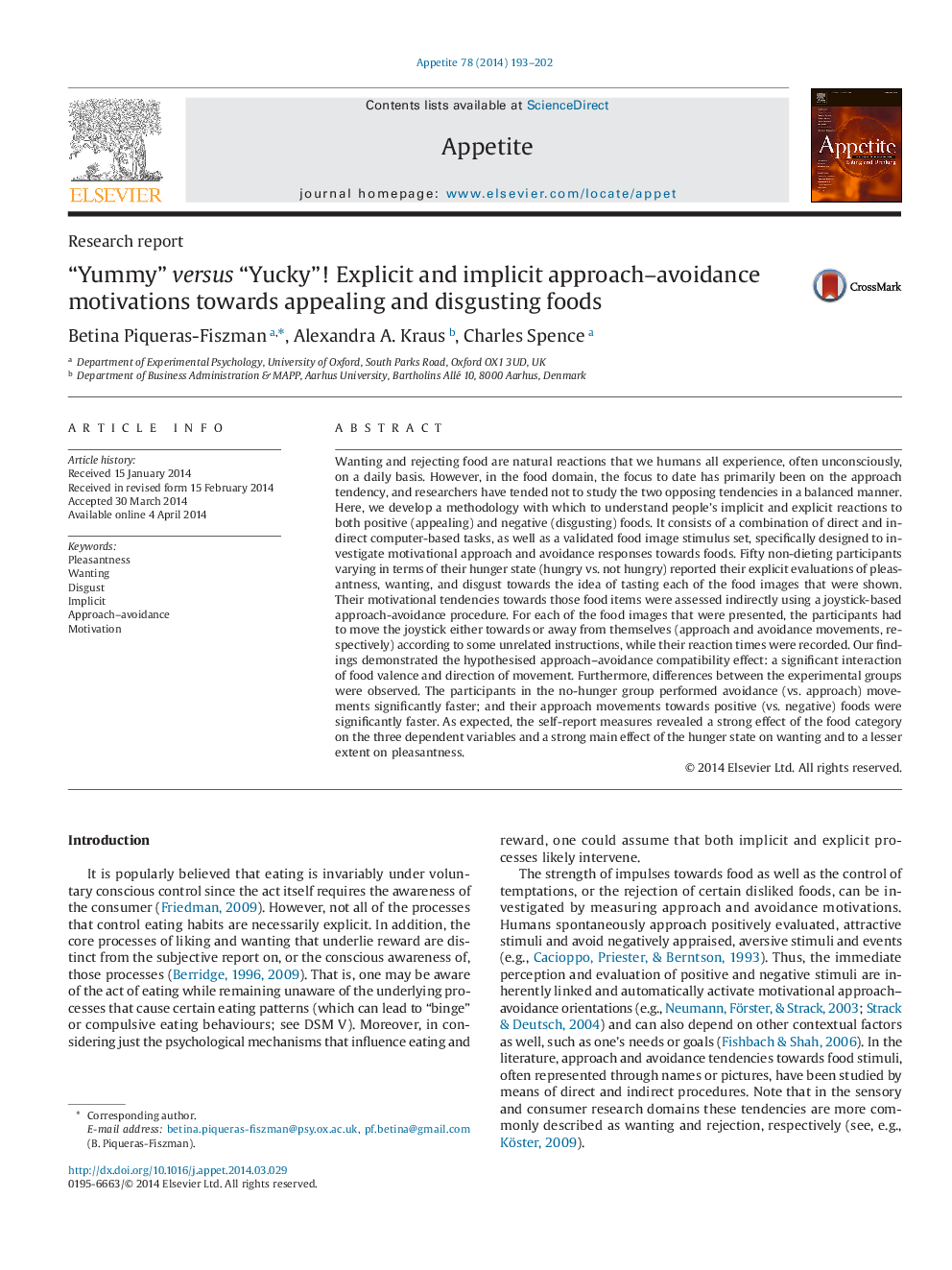| کد مقاله | کد نشریه | سال انتشار | مقاله انگلیسی | نسخه تمام متن |
|---|---|---|---|---|
| 939594 | 1475402 | 2014 | 10 صفحه PDF | دانلود رایگان |

• Subjects rated pleasantness, wanting, and disgust towards positive and negative foods.
• An indirect approach-avoidance task assessed their motivational tendencies.
• Ratings reflected extreme reactions, revealing a strong effect of the food category.
• Implicit measures were more sensitive to study rejection to negative foods.
Wanting and rejecting food are natural reactions that we humans all experience, often unconsciously, on a daily basis. However, in the food domain, the focus to date has primarily been on the approach tendency, and researchers have tended not to study the two opposing tendencies in a balanced manner. Here, we develop a methodology with which to understand people's implicit and explicit reactions to both positive (appealing) and negative (disgusting) foods. It consists of a combination of direct and indirect computer-based tasks, as well as a validated food image stimulus set, specifically designed to investigate motivational approach and avoidance responses towards foods. Fifty non-dieting participants varying in terms of their hunger state (hungry vs. not hungry) reported their explicit evaluations of pleasantness, wanting, and disgust towards the idea of tasting each of the food images that were shown. Their motivational tendencies towards those food items were assessed indirectly using a joystick-based approach-avoidance procedure. For each of the food images that were presented, the participants had to move the joystick either towards or away from themselves (approach and avoidance movements, respectively) according to some unrelated instructions, while their reaction times were recorded. Our findings demonstrated the hypothesised approach–avoidance compatibility effect: a significant interaction of food valence and direction of movement. Furthermore, differences between the experimental groups were observed. The participants in the no-hunger group performed avoidance (vs. approach) movements significantly faster; and their approach movements towards positive (vs. negative) foods were significantly faster. As expected, the self-report measures revealed a strong effect of the food category on the three dependent variables and a strong main effect of the hunger state on wanting and to a lesser extent on pleasantness.
Journal: Appetite - Volume 78, 1 July 2014, Pages 193–202